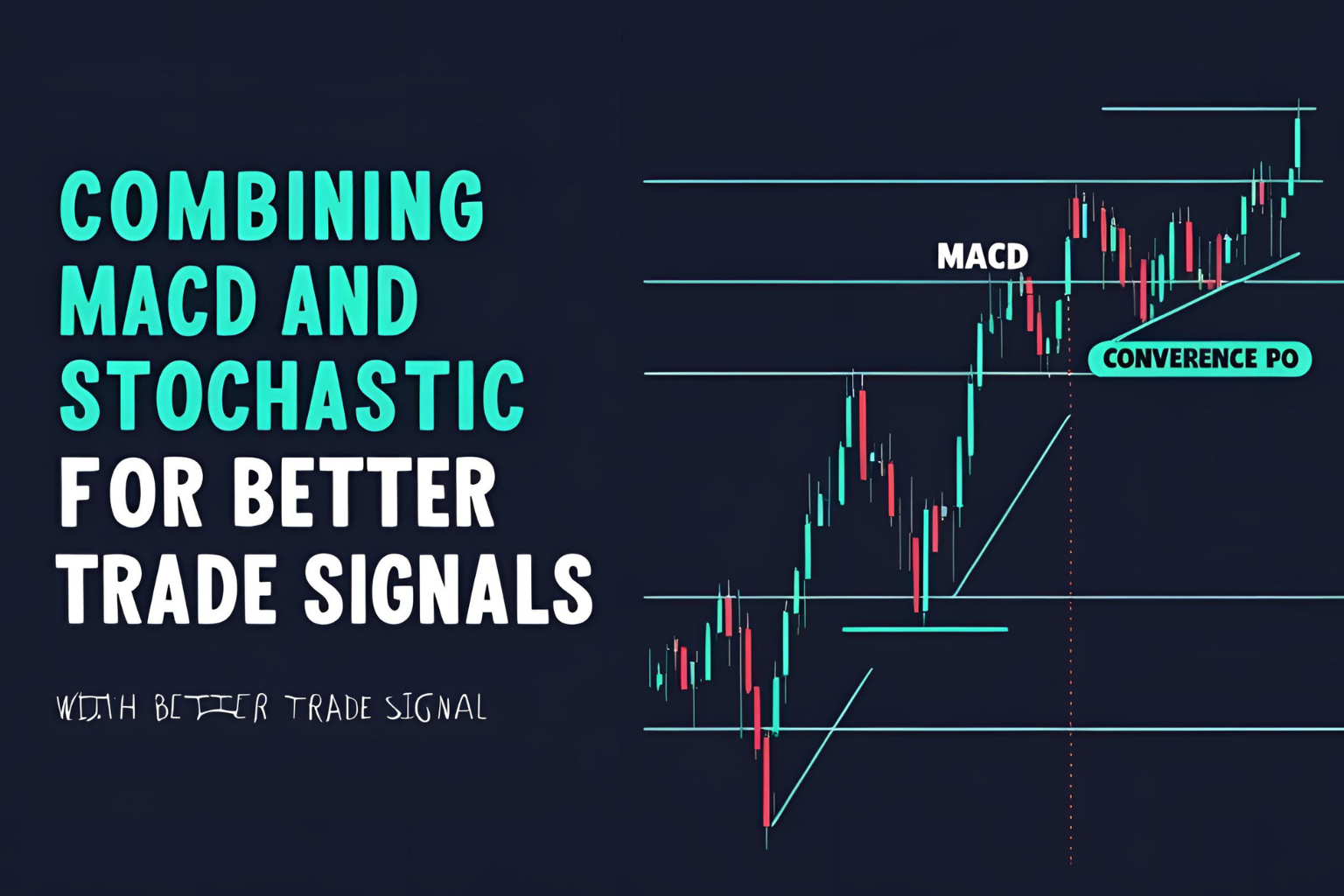Combining MACD and Stochastic for Better Trade Signals
Introduction
Both the MACD (Moving Average Convergence Divergence) and the stochastic oscillator are powerful momentum indicators—but they serve different purposes. While stochastic focuses on overbought/oversold conditions, MACD helps identify trend strength and direction. By combining MACD and stochastic, you can filter out false signals and improve trade timing significantly.
Why Combine These Indicators?
Used together, MACD and stochastic provide a dual confirmation system:
- MACD: Trend and momentum direction
- Stochastic: Momentum exhaustion and reversal potential
This combination helps avoid entering trades against the trend or too early during trend development.
Basic Setup
MACD Settings:
- Fast EMA: 12
- Slow EMA: 26
- Signal Line: 9
Stochastic Settings:
- %K: 14
- %D: 3
- Smoothing: 3
(Use 5,3,3 for faster entries)
Strategy Rules: Buy Example
- MACD line crosses above signal line (bullish momentum)
- Stochastic %K crosses above %D below the 20 level (oversold zone)
- Both occur within a short timeframe
Entry: Enter long after both signals are confirmed
Stop loss: Just below recent swing low
Exit: Near resistance or when stochastic reaches overbought (>80)
Strategy Rules: Sell Example
- MACD line crosses below signal line (bearish momentum)
- Stochastic %K crosses below %D above the 80 level (overbought zone)
- Confirm both within close proximity
Entry: Enter short
Stop loss: Above recent swing high
Exit: When stochastic reaches oversold or MACD shows weakening momentum
Benefits of This Combo Strategy
- Filters out false stochastic signals during strong trends
- Improves trade timing with layered confirmation
- Works across markets (stocks, forex, crypto, indices)
- Ideal for swing trading and intraday setups
Tips for Success
- Use on timeframes like 15-min, 1-hour, or daily
- Avoid sideways/choppy markets where MACD may lag
- Confirm with price action (e.g., support/resistance or candlestick patterns)
Conclusion
Combining MACD and stochastic gives you the best of both worlds—trend confirmation from MACD and entry precision from stochastic. This synergy reduces guesswork and improves overall trading discipline. Practice this strategy with backtesting before going live, and consider using alerts to automate parts of your workflow.
FAQs
Q1. Should I use MACD or stochastic first?
Start with MACD to identify the trend, then use stochastic for timing entries.
Q2. Can I use this combo on 5-min charts?
Yes, but expect more noise. Use tighter stop-loss rules.
Q3. Are MACD and stochastic redundant?
No—they complement each other by analyzing different aspects of market movement.
Q4. What if signals conflict?
Wait for alignment or use additional confirmation tools like RSI or volume.
Q5. Is this strategy good for beginners?
Yes, it’s beginner-friendly and provides a structured approach to entries.





